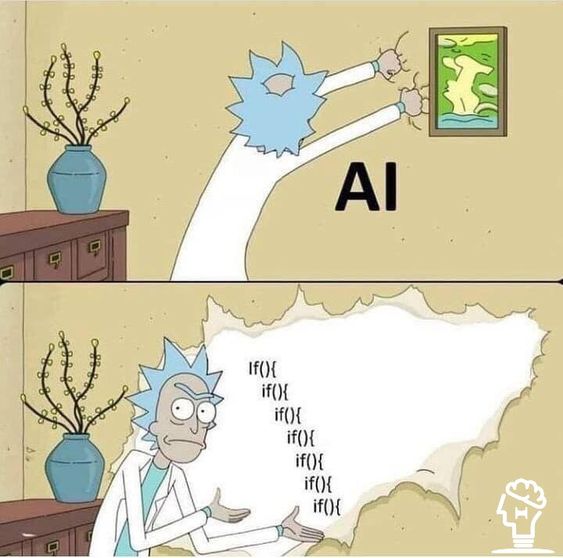It’s hard to ignore the growing buzz around artificial intelligence (AI) and its potential impact on various industries. Recently, Mark Zuckerberg predicted on Joe Rogan’s podcast that AI could replace mid-level engineers by 2025. While it’s a compelling narrative, it misses the mark for several reasons. Let’s unpack why this prediction is more hype than reality.
Companies Aren’t Fully Using Their Own AI Tools
Take Salesforce as a prime example. The company has heavily promoted its AI-powered sales agents, touting them as the future of sales. Yet, if you look at Salesforce’s own career page, approximately 75% of their job postings (775 out of 1035 as of Jan 16, 2025) are for sales roles. If their AI tools were truly ready to replace human salespeople, why wouldn’t Salesforce “dogfood” their own product, slash sales jobs, and reap massive savings?

This disconnect isn’t unique to Salesforce. Many companies pushing AI solutions still rely heavily on human expertise to deliver the results they promise. It’s one thing to sell the dream of AI-driven automation, but it’s another to trust your core operations to it. If organizations like Salesforce, which stand to gain the most from successful AI adoption, aren’t betting the farm on their own tools, why should we believe AI will displace engineers en masse at other companies?
AI-Generated Code Still Needs Maintenance
Even if AI can write functional code, that doesn’t eliminate the need for mid-level engineers. All code, no matter how well-written, eventually requires updates. Security vulnerabilities need patching, APIs evolve, dependencies get deprecated, and business requirements change. Who’s going to handle these inevitable maintenance tasks? AI might be able to assist, but it can’t completely replace the nuanced understanding of a system that a human engineer provides.
Consider the metaphor of AI as a power tool for software development. It can make some tasks faster and easier, but someone still needs to wield the tool, know how to use it safely, and fix the mess when something goes wrong. Far from making engineers obsolete, AI tools are likely to amplify their productivity—and perhaps even increase demand for engineers who can effectively integrate these tools into their workflows.

If companies like Meta actually moved forward with replacing most of their mid-level engineers, they’d quickly find themselves in a “foot-and-gun” scenario. Without a robust team of engineers to maintain and adapt AI-generated code, systems would break down, product development would stall, and customer trust would erode. It’s a short-sighted strategy that prioritizes immediate cost savings over long-term resilience.
Selling the Promise of AI Is in Their Interest
It’s no secret that tech giants have a vested interest in promoting AI as the next big thing. AI and machine learning are lucrative business lines, and hyping up their potential is a great way to attract investment, sell products, and capture headlines. By framing AI as a technology capable of replacing entire swaths of the workforce, these companies generate excitement and urgency around adopting their solutions.
Heck, I am an AI/ML Engineer… I am in the space promoting the same thing, but my views on AI/ML is that they are HIGHLY strategic tools to be used by people. Replacing mid-level engineers isn’t just a technical challenge; it’s a strategic one. Engineering teams don’t just write code—they collaborate, solve complex problems, and adapt systems to changing business needs. These human-centric tasks are not easily outsourced to AI, no matter how advanced it becomes.

At the end of the day, humans consume the products that these companies produce. Until that changes, people will make the decision on what to buy and companies need to persuade those people to choose to buy their products. AI/ML systems don’t understand why things go viral, why we collectively like what we do, and why things like Hawk Tuah or Luigi Mangione captured our collective attention. Would AI have predicted that a good number of people would rally around someone killing another person? I think not.
The Full Stop Thought
AI is undoubtedly transforming how we work, and some jobs will inevitably be impacted. However, the idea that AI will replace most mid-level engineers at companies like Meta by 2025 is far-fetched. The reality is that AI tools are most effective as complements to human expertise, not replacements for it. Companies still need skilled engineers to maintain systems, adapt to changes, and ensure the quality of their products—and that’s not going to change anytime soon.
Here is the final thought… Currently, all AI systems today start with a user prompt. The keyword here is the user. Humans drive the direction of the work an AI system does because they aren’t self-aware of their environment. They don’t know what’s happening outside the digital world and the little box they live in. Until AI systems interfaces become a simple power switch without requiring a user prompt, these systems will need humans to direct what they produce. Period.



